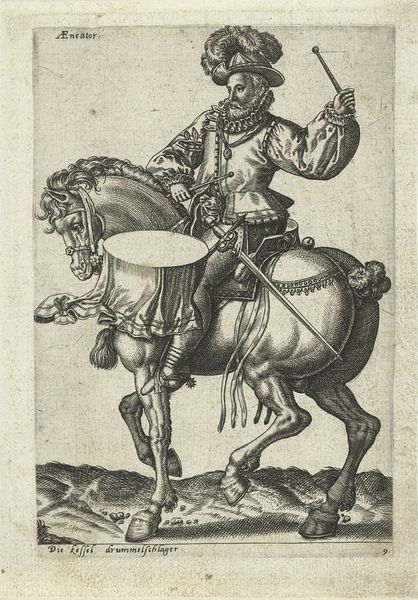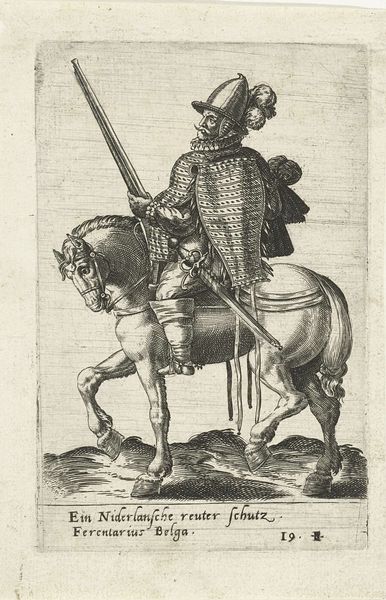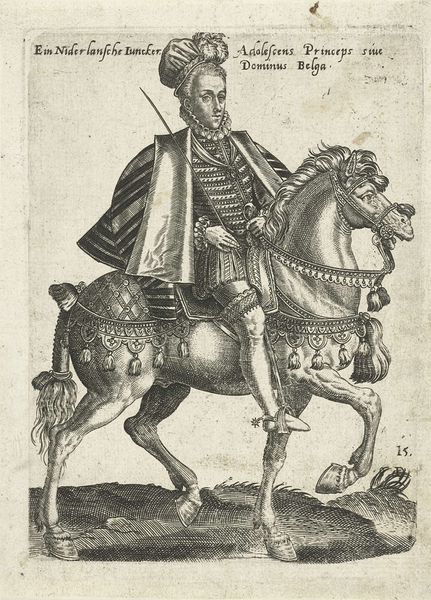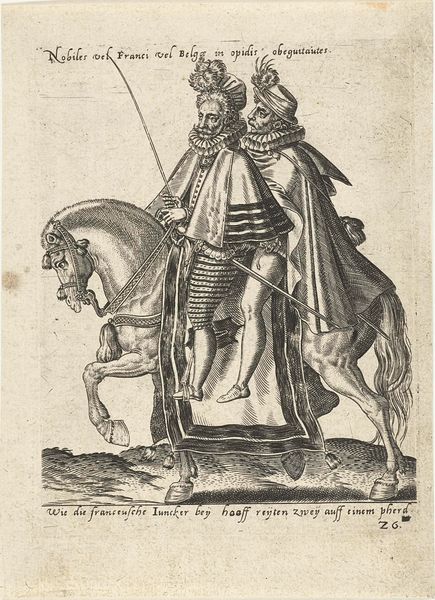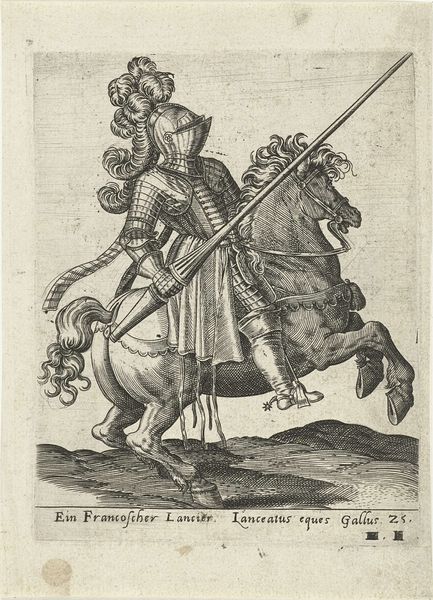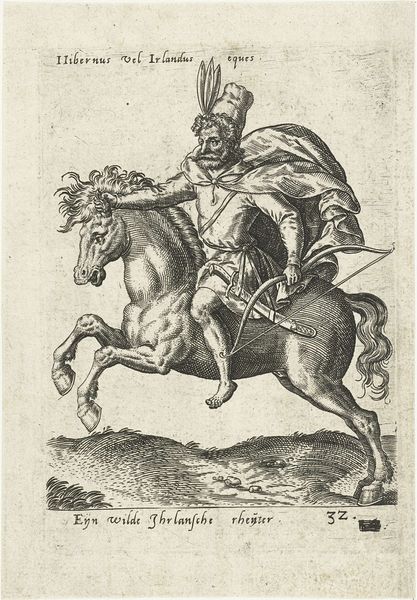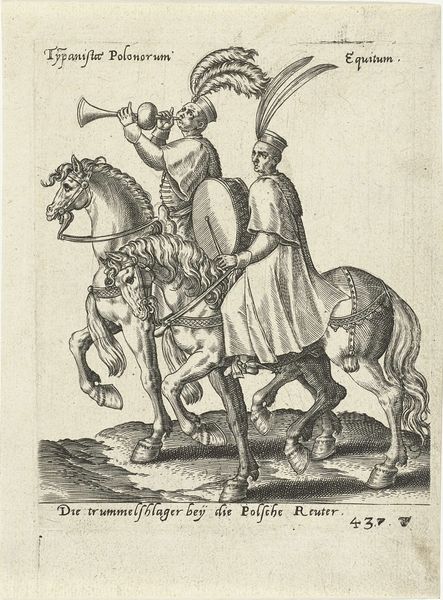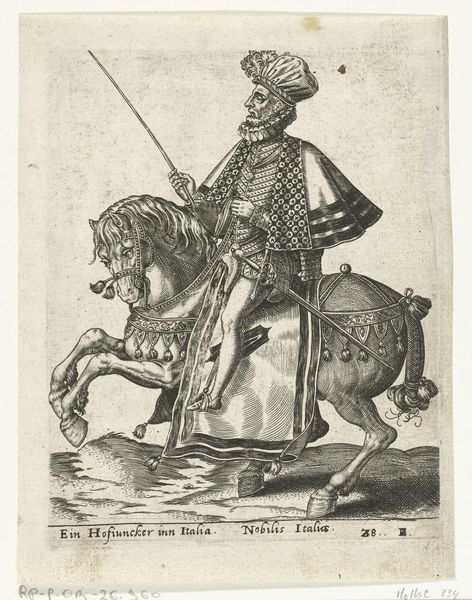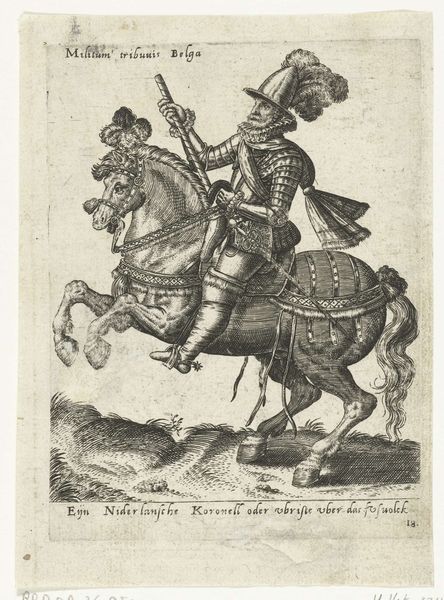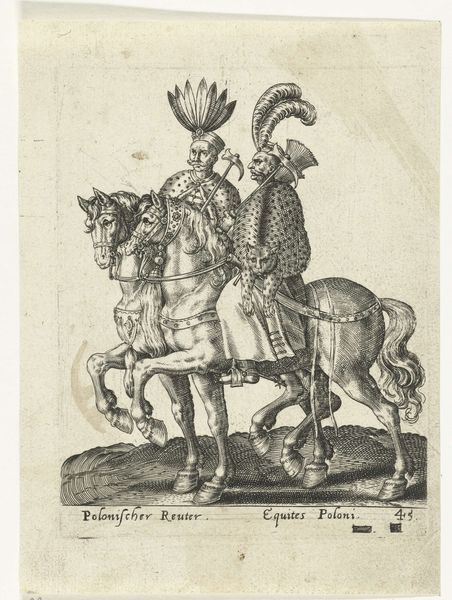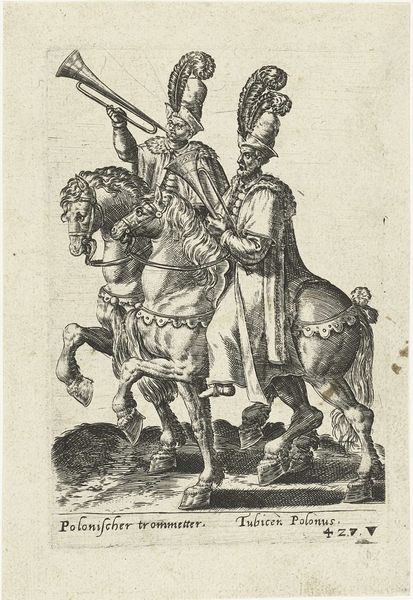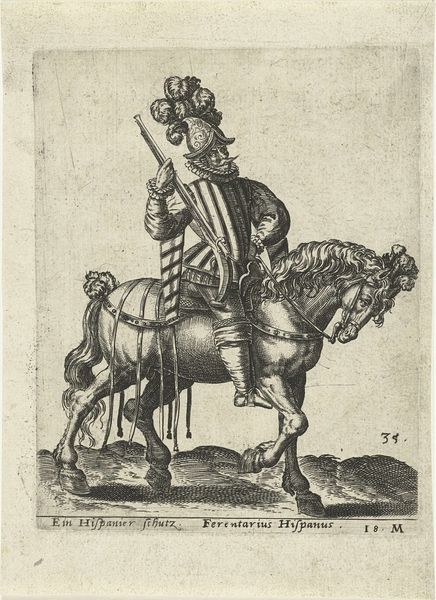
Dimensions: height 152 mm, width 113 mm
Copyright: Rijks Museum: Open Domain
This engraving, "Spaanse heer te paard," or "Spanish gentleman on horseback," was crafted by Abraham de Bruyn in the late 16th century. Look closely, and you'll notice how the intricate linework creates a play of light and shadow that gives the image its depth. The figure is presented with incredible attention to detail, from the ruff around his neck to the plumes adorning both his and his horse's head. De Bruyn masterfully uses a semiotic system of signs, embedding cultural codes within the visual components. The gentleman's ornate attire, the horse's elaborate trappings, and his confident posture, all speak to status, power, and a certain level of performative identity. The composition, with the figure slightly elevated and centrally positioned, further emphasizes his importance. Consider how the artist uses the formal qualities of the artwork – the lines, textures, and the way they construct form – to not only depict a subject but also to engage with contemporary notions of nobility. This piece prompts us to reflect on how art functions as a mirror, reflecting and shaping cultural values.
Comments
No comments
Be the first to comment and join the conversation on the ultimate creative platform.
